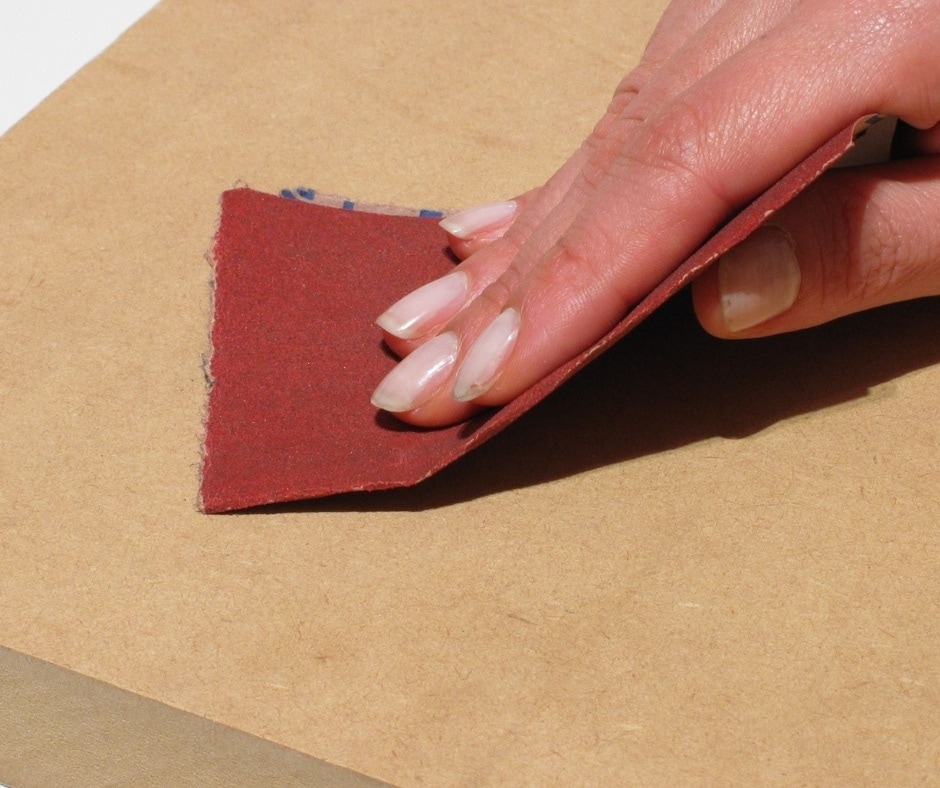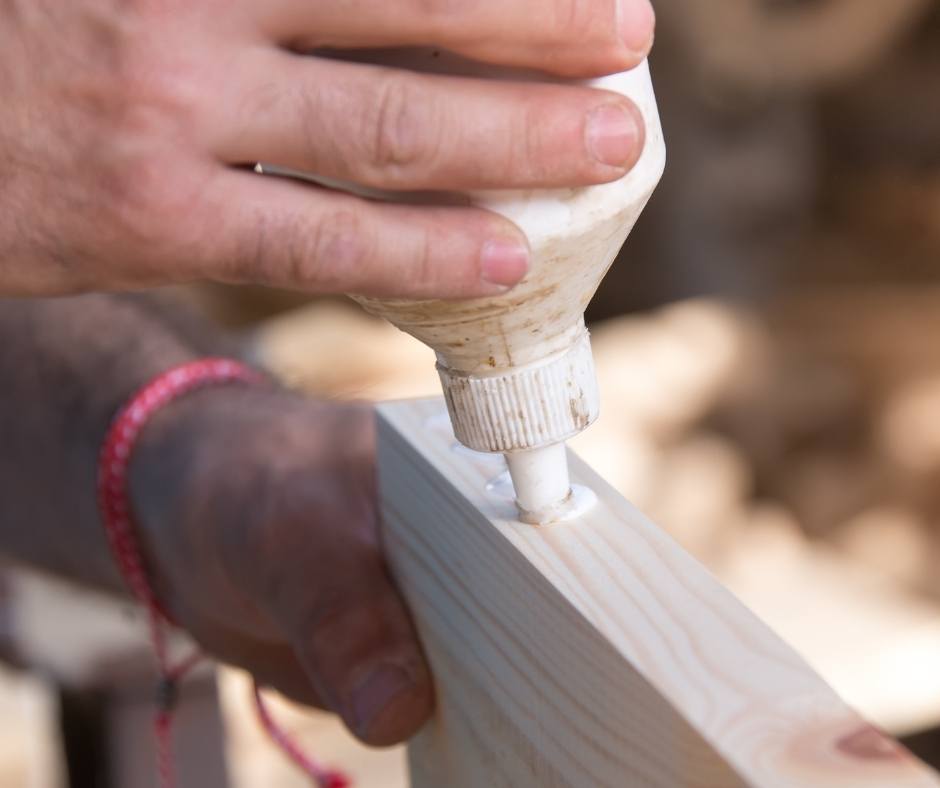The fastest, most efficient way to connect fabric and wood is through a fastener of some kind, usually staples or a specialty flat-headed fabric nail.
There are times when that won’t work, especially if you need to connect them where it is visible. In those cases, you’ll want to glue them together. Not just any glue will work. Some spread through the fabric and can leave a noticeable stain.
We’ve figured out which glues to use and how to use them to create a bond that will hold your fabric and wood together. We put together this article with that knowledge and hope that you find value in it.
In This Article We'll Discuss
How to glue wood to fabric

The secret to gluing wood and fabric together is preparation, concentration, and choosing the right glue. Wood is generally the fixed point here. You’ll need to control the fabric when bonding the two because it doesn’t hold shape.
To start, however, you want to sand the wood down with a piece of 100-grit sandpaper. This will make sure the surface is flat and without bumps or holes that might detract from the appearance of your finished item.
Once it’s sanded down, run a damp piece of cloth or paper towel over it to get rid of the dust and little wood flakes that came off during sanding. You don’t want to bond fabric to sawdust, you want to bond it to wood.
The next is applying the glue to the wood. You’ll want to make sure you’ve selected the right glue. The most popular glue is mod podge. It’s a multi-surface adhesive that works well with both fabric and wood. You can also use it over the fabric to seal it.
Another popular choice is a spray adhesive designed for fabric. These are good because they will go on in an even layer. You want to make sure that your glue won’t pool on the wood and create an uneven bond with the fabric.
When you’re ready to bond the wood and fabric, apply a thin, uniform layer of glue to the wood. If you’re using mod podge, a foam brush works well here.
Take your fabric and lay it down over the wood as accurately as you can get it. You’ll have a little time to adjust but try to get it as right as possible at first to prevent the possibility of the glue drying while it’s uneven. Once it’s down, smooth out any wrinkles with your fingers.
The glue will dry pretty quickly, so work fast. But let it sit for another 24 hours to finish drying completely. Once done, trim excess fabric.
How to glue fabric to wood furniture

Using glue on furniture is pretty common. Glue can create a fast, strong bond and you don’t have to worry about tearing the furniture fabric with staples or nails.
The trick is going to be in how you lay the fabric down after you’ve applied the glue to the wood. You’ll need to work quickly, too, because the glue can dry fast.
First, get a piece of fabric that is about one inch larger on all sides than the sheet you need it. It is far better to need to trim the excess at the end than it is to have too little.
Apply the glue to the wood in a uniform layer that doesn’t pool on the wood. Pooling glue will make the fabric over it harder than other fabric and can make the entire job look shoddy. Allow it to set for three minutes.
Hold the fabric up with one hand. Working from one end, first lay the fabric down so there is an inch hanging over the edge. Lay the rest of it down with that hand, working it into the glue with the other.
When you’ve come to the end, you should have something that is pretty close to complete coverage. You might also have some wrinkles. That is no big deal.
Lift the fabric and work the wrinkles out, going from one side to the other. Once you’ve reached the far side, the fabric should be smooth.
Allow it to sit overnight. This will allow the bond to completely dry. Then you can trim the overhanging fabric off without worrying you might pull it out of position.
What is the best type of glue for gluing fabric to wood?
There are several glues that work great for bonding fabric to wood. Standard crafting glue is not a good choice because it tends to go on thick and gloppy.
Mod podge, on the other hand, is a popular choice because it creates a strong bond between the two, is easy to apply and, dries quickly. You can also apply it as a sealant once the glue is dry. Just be sure to apply it evenly or else it’ll show.
Beyond that, look for glues specifically designed for fabric. Because wood has cracks and pores, it isn’t difficult to find a glue that works. But the fabric is your showing side and the glue you use can alter its appearance.
For that reason, a spray adhesive designed for fabric is a great choice. Those go on evenly and can develop a tight hold once the fabric is down.
If you don’t want to use a spray adhesive, you can find standard fabric glues. Just be aware that you’ll want to apply them in even layers to get the best results.
You might be tempted to use a cyanoacrylate like Super Glue. While this forms a fast, hard bond, they easily leak through the fabric and create a very noticeable hard spot on the fabric.
Conclusion
Gluing fabric and wood together is a great way to bond them without risking a tear or splintering the wood. It’s also great to use in crafting.
You’ll want to know the right way to do it and which glue to use. It isn’t hard, but if you use the wrong stuff, and it might seep through the fabric and leave a stain.
We put together this article to help you figure out how to do it right. If it helped you, or you have a tip of your own, we’d love a comment about it. You’re also invited to share this on your social media networks. Share the knowledge!


